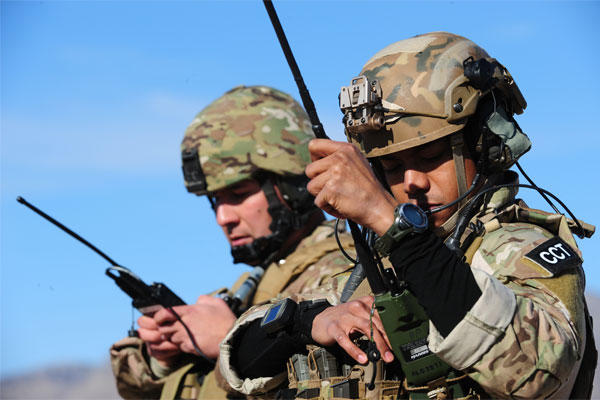The U.S. Air Force needs more troops who can call in airstrikes and help coordinate close-air-support missions, a top Air Force leader said.
The service is facing a shortage of personnel qualified for the jobs, known in military parlance as joint terminal attack controller, or JTAC, and tactical air control party, or TACP, according Gen. Herbert "Hawk" Carlisle, head of the service's Air Combat Command.
While the shortfall isn't as big as the one affecting the Air Force's stable of drone operators, he said, it's an issue at a time when American warplanes such as the F-15, F-16 and A-10 are back in the Middle East launching airstrikes against militants affiliated with the Islamic State in Iraq and Syria, or ISIS.
"The TACPs and JTACs -- we need more of them," Carlisle said during a briefing with reporters last week at the Pentagon.
The number of personnel in those positions has more than tripled from about 450 in the 1990s to about 1,500 today, yet "we're still not meeting the requirement," he said. "The demand for training ... and producing those guys and keeping them current has gone up. That's part of the challenge."
Carlisle met with leaders from other services, the National Guard Bureau and even the Defense Advanced Research Projects Agency for a summit last week at the Pentagon to review the close-air-support mission. He said the group, which included operators, identified a gap in training for both current and future missions.
"The environment we've been operating in the last 15 years is a permissive environment, so we're conducting close-air-support and missions that are very similar to that in an environment where the only thing we're worried about is that element on the ground," he said. "If we're in a contested airspace … that's a higher level of training and that takes a lot of work."
Carlisle said the Air Force is looking at ways to train more airmen in simulated environments. The service in 2008 built a "virtual trainer dome" for joint terminal attack controller students at Nellis Air Force Base in Nevada. He said the base will also probably soon house a new joint integration group for close-air-support as a result of the recent summit.
During the briefing with reporters, the general praised the A-10 attack aircraft, the service's dedicated close-air-support platform, but said the aging Cold War-era plane nicknamed the Warthog will eventually have to be retired. Even after upgrades to keep the plane current with new wings, an engine and cockpit, "those airplanes are going to wear out," he said.
Carlisle said the F-35 Joint Strike Fighter, the Pentagon's newest and most expensive fighter jet, will eventually take over the close air support mission. But he acknowledged the stealthy fifth-generation fighter jet made by Lockheed Martin Corp. will initially lag older aircraft in its ability to carry out such operations.
The general said the Air Force may consider buying lower-cost planes as the Textron Inc.'s Scorpion for close air support missions. But automatic budget cuts known as sequestration will probably delay such an acquisition effort for some time, he said.
"We can't afford it now," he said.
While JTACs "are very stressed," Carlisle acknowledged the dearth of pilots for such drones as the MQ-1 Predator and MQ-9 Reaper was an even more pressing problem.
The number of daily combat air patrols, or CAPs, flown by remotely piloted aircraft, or RPAs, has increased from 21 in 2008 -- which met more than half of the service's needs -- to 65 today -- which only satisfy 21 percent of its requirements, Carlisle said.
"The demand for CAPs and for RPAs has gone up so radically, the ramp has been so high, we haven't normalized and built a system to do that," he said.
Because drone pilots live and work at stateside bases far from the war zone, they work longer schedules, with some crews working 12 to 14 hours a day for an entire week, Carlisle said. "We don't let them PCS," he said, referring to relocating as part of a permanent change of station. "We don't let them go on leave because demand for that capability is so high."
Overall, the Air Force has about 1,000 active-duty pilots for Predators and Reapers, though more than 200 additional aviators are needed. One study put the required number at 1,650 pilots. The service trains about 180 operators a year, but needs about 300 of them and loses about 240 due to attrition.
Air Force Secretary Deborah Lee James has vowed no more layoffs in fiscal 2015. The service has been shrinking in recent years due in part to budget cuts. As of Jan. 31, the active component had about 312,000 airmen.
-- Brendan McGarry can be reached at Brendan.McGarry@military.com.





























